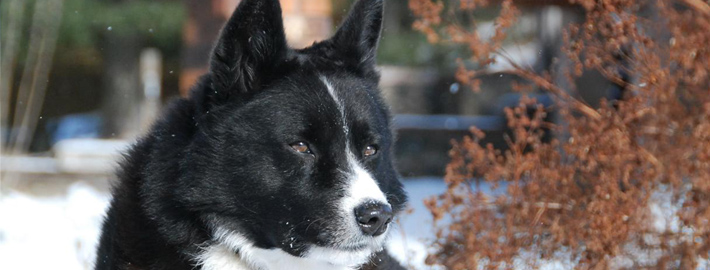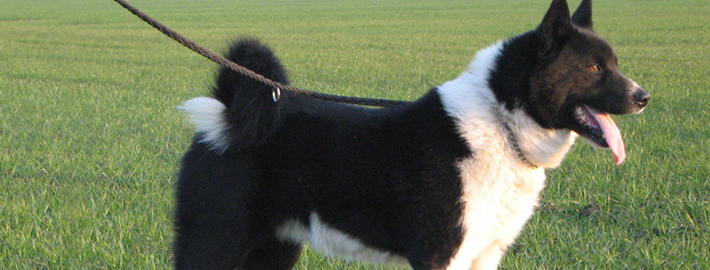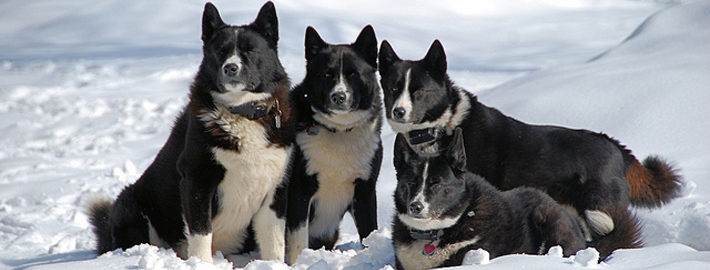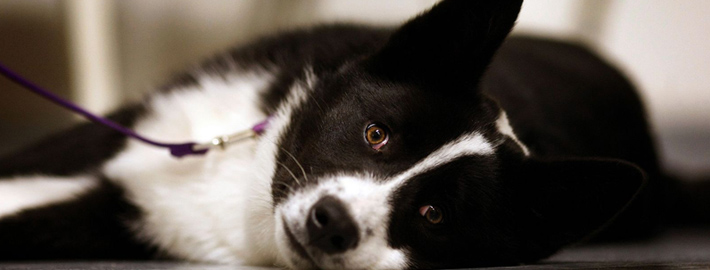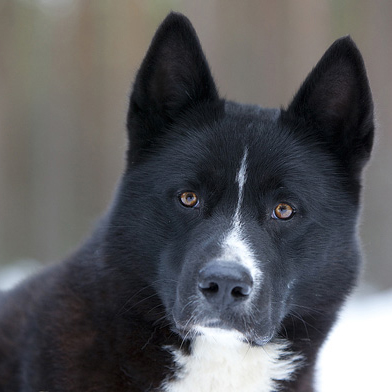What makes the Karelian Bear Dog Unique?
Karelian Bear Dogs are a primitive hunting breed known for their courage to deal with large prey animals, including bear and cougar. Believed to have survived to the present day from descendants of Viking Age spitz-type hunting dogs, the qualities that are necessary for survival in the wilderness have been passed on to the present generation. Fearless by nature, the dog is known for its ability to work independently in difficult conditions.
Breed Groups
Page Contents
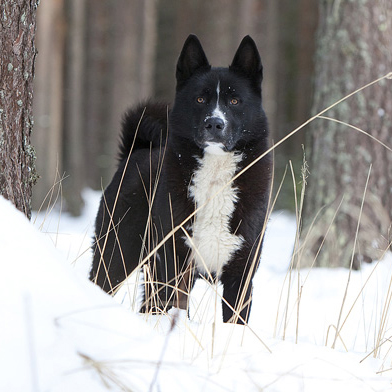
Is the Karelian Bear Dog Right For You?
Fearlessly protective and extremely alert, these dogs are superb watchdogs. They are reserved with strangers but very welcoming to family and friends. With the proper training and socialization, the Karelian Bear Dog can be an ideal household companion and a lifelong friend to everyone in the family.
In 5 Words
- Tough
- Protective
- Athletic
- Dependable
- Playful
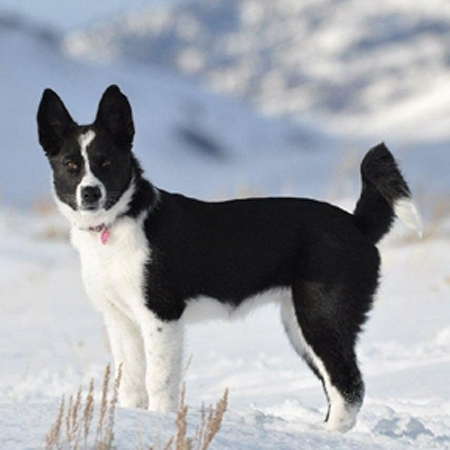
Characteristics
Learn About the Karelian Bear Dog
Description
General Description
The Karelian Bear Dog was partly named for its ability to hunt bear. The breed is very strong and powerful. It has a massive body that is well proportioned. Its head is massive and has a profuse amount of fur. The ears are moderate in size and triangular. The muzzle is average in size with a prominent nose. The facial features are dark. The chest is deep and broad. The breed has straight forelegs and angled backquarters. Its neck is thick, but vague. The shoulders are high and blends smoothly into the high and level back. The tail is set high and curls up and over the back. The breedтАЩs coat is very thick and coarse.
Size
On average, Males stand 54–60 cm (21–24 in) at the withers; females are shorter, at 49–55 cm (19–22 in). Both sexes weigh 20–23 kg (44.1–50.7 lbs).
Coat
The breed has a coat of straight, stiff guard hairs and a fine, soft, thick undercoat. There should be no curl in the hair at all. The colour must be black with white markings. Often the jet black hair is slightly tinted with brownish highlights on the ends giving it an iridescent quality. Preferably the color percentage is around 70% black and 30% white. The bushy tail curls in a circle over the back in a ring and has a white tip. It falls gently onto the dog’s back or to one side. Purebred KBD have tails that curve into a circle rather than a sickle.
Short History of the Karelian Bear Dog
Hailing from northwestern Europe, the Karelian Bear Dog was the dog of choice for Russian and Finnish farmers, hunters and peasants. Because these people lived on wild boar, deer, elk and hare, their dogs had to be tough and resilient hunters—traits the Karelian Bear Dog had in spades. A top breed in Finland, the Karelian Bear Dog is slowly gaining popularity in the United States.
Temperament
Courage is a prominent trait of the Karelian Bear Dog. The breed has a very good sense of its strength and knows how to use its power to overcome game. This trait is beneficial to hunting types. Types that are kept as pets (very rare) are not generally aggressive, but will protect their family. Although the breed is a hard worker, it also has a fun, spirited side. However, it is not an appropriate companion for young children. Supervision is always recommended when the breed is interacting with children or other pets in the home. The breed is friendly to guests to the home.
Caring for Your Karelian Bear Dog
General Health
Karelian Bear Dogs are some of the healthiest dogs in the world. Currently there are no serious hereditary health problems known to be associated with them. However, minor abnormalities typical of all purebred dogs may occur among Karelian Bear Dogs. Infrequent occurrences of umbilical hernia and monorchidism (the state of having only one testicle within the scrotum) have been seen among puppies.
Grooming & Bathing
The all-weather coat is easy to care for, requiring little attention. Use a metal comb when the dog is shedding for easy removal of the lose hair from the undercoat. Like other Arctic dogs, the Karelian Bear Dog does not have doggie odor. This breed is an average shedder.
Exercise & Training
The Karelian Bear Dog will usually obtain the exercise it needs on a daily basis. It is imperative that owners keep an eye on the breed to make sure it is getting adequate exercise. A daily walk is sufficient for the breed.

